Morpholine
Synonym(s):Morpholine;Tetrahydro-1,4-oxazine
- CAS NO.:110-91-8
- Empirical Formula: C4H9NO
- Molecular Weight: 87.12
- MDL number: MFCD00005972
- EINECS: 203-815-1
- SAFETY DATA SHEET (SDS)
- Update Date: 2025-02-14 17:23:09
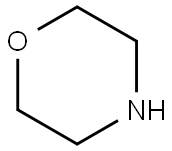
What is Morpholine?
Description
Morpholine is a colorless liquid with a weakammonia or fish-like odor. The odor threshold is 0.01 ppm.Molecular weight = 87.14; Specific gravity (H2O:1) 51.007; Boiling point = 128.9℃; Freezing/Meltingpoint 5 25℃; Vapor pressure 5 6 mmHg at 20℃; Flashpoint 5 37℃. Autoignition temperature 5 310℃. Explosivelimits: LEL 5 1.4%; UEL 5 11.2%. Hazard Identification(based on NFPA-704 M Rating System): Health 3,Flammability 3, Reactivity 0. Soluble in water
Chemical properties
Morpholine is a colorless to yellow liquid with a weak ammonia or fish-like odor. The odor threshold is 0.01 ppm. The reactivity of morpholine is mainly due to its secondary amine group. It readily undergoes organic condensations, alkylations, and arylations, resulting in the formation of various N-substituted morpholine compounds. Ethers are relatively chemically inert, hence the oxygen is of relatively little consequence except as a member of the heterocyclic ring (Texaco Chemical Co. 1982).
Physical properties
Colorless, mobile, oily, hygroscopic, flammable liquid with a weak ammonia-like odor. Experimentally determined detection and recognition odor threshold concentrations were 40 μg/m3 (11 ppbv) and 25 μg/m3 (70 ppbv), respectively (Hellman and Small, 1974). Forms explosive vapors at temperatures >35 °C.
The Uses of Morpholine
Morpholine is made by dehydrating ethanolamines. Its main use is as a rubber accelerator in manufacturing tires. This process requires high temperature (300°F) and pressure, which increase the hazards. Morpholine is also used as a boiler water additive, brightener for detergents, and corrosion inhibitor, in the preservation of book paper, in waxes and polishes, and in organic synthesis.
The Uses of Morpholine
Rubber accelerator, solvent, additive to boilerwater, waxes and polishes, optical brightener fordetergents, corrosion inhibitor, preservation of bookpaper, organic intermediate (catalyst, antioxidants,pharmaceuticals, bactericides, etc.).
The Uses of Morpholine
Solvent for resins, waxes, casein, dyes; morpholine compounds used as corrosion inhibitors, insecticides, antiseptics, intermediate for rubber-processing chemicals; corrosion inhibitors; waxes and polishes; optical brighteners
Production Methods
Morpholine is produced by reacting diethylene glycol, ammonia, and a small amount of hydrogen over a hydrogenation catalyst at 150-400°C and 30-400 atmospheres with the morpholine being recovered by fractional distillation. Various byproducts include 2-(2-aminoethoxy)ethanol and Af-alkylmorpholines (NRC 1981).
Definition
ChEBI: Morpholine is an organic heteromonocyclic compound whose six-membered ring contains four carbon atoms and one nitrogen atom and one oxygen atom that lies opposite to each other; the parent compound of the morpholine family. It is a saturated organic heteromonocyclic parent and a member of morpholines. It is a conjugate base of a morpholinium.
General Description
An aqueous solution with a fishlike odor. Corrosive to tissue and moderately toxic by ingestion and inhalation.
Air & Water Reactions
Highly flammable. Water soluble.
Reactivity Profile
MORPHOLINE dissolved in water neutralizes acids in exothermic reactions to form salts plus water. May be incompatible with isocyanates, halogenated organics, peroxides, phenols (acidic), epoxides, anhydrides, and acid halides. Flammable gaseous hydrogen may be generated in combination with strong reducing agents, such as hydrides.
Hazard
Flammable, moderate fire risk. Toxic byingestion and inhalation, irritant to skin, absorbedby skin. Eye damage and upper respiratory tractirritant. Questionable carcinogen.
Health Hazard
May cause toxic effects if inhaled or ingested/swallowed. Contact with substance may cause severe burns to skin and eyes. Fire will produce irritating, corrosive and/or toxic gases. Vapors may cause dizziness or suffocation. Runoff from fire control or dilution water may cause pollution. Morpholine is readily absorbed through the skin; it causes nasal irritation when inhaled, with coughing, bronchial irritation, and pulmonary edema at increasingly higher concentrations. Upon ingestion, it causes hemorrhage in the gastrointestinal tract, with possible diarrhea; liver and kidney damage may occur if sufficient amounts are ingested or inhaled. Morpholine itself is not a carcinogen on the basis of available data.
Fire Hazard
Flammable/combustible material. May be ignited by heat, sparks or flames. Vapors may form explosive mixtures with air. Vapors may travel to source of ignition and flash back. Most vapors are heavier than air. They will spread along ground and collect in low or confined areas (sewers, basements, tanks). Vapor explosion hazard indoors, outdoors or in sewers. Runoff to sewer may create fire or explosion hazard. Containers may explode when heated. Many liquids are lighter than water.
Flammability and Explosibility
Flammable
Industrial uses
The total industrial consumption of morpholine is 11,000 metric tons/year. The largest usage for morpholine (33%) is in the rubber industry as an intermediate in the production of delayed-action accelerators for the polymerization of rubber, as stabilizers against heat-aging effects, and as bloom inhibitors in butyl rubber vulcanization. A second large proportion (25%) of morpholine production is used as an inhibitor to combat carbonic acid corrosion in condensate return lines of steam boiler systems. Morpholine is an intermediate in the manufacture of optical brighteners utilized by the soap and detergent industry. Morpholine reacts readily with fatty acids, forming soaps used in the formulation of self-polishing waxes and polishes and in coatings for the food industry. N-methyl morpholine and TV-ethyl morpholine are used as catalysts in the manufacture of polyurethane foams. Morpholine derivatives are utilized in pharmaceutical applications, as bactericides, fungicides, and herbicides, and as separating agents for oils. Other derivatives are utilized in the textile and printing industry as adjuvants, whitening agents, stabilizers, ink eradicators, and paper conditioners (Mjos 1978; NRC 1981; Texaco Chemical Co. 1982).
Safety Profile
Moderately toxic by ingestion, inhalation, skin contact, and intraperitoneal routes. Mutation data reported. A corrosive irritant to skin, eyes, and mucous membranes. Can cause kidney damage. Questionable carcinogen with experimental neoplastigenic data. Flammable liquid. A very dangerous fire hazard when exposed to flame, heat, or oxidizers; can react with oxidizing materials. To fight fire, use alcohol foam, CO2, dry chemical. Mixtures with nitromethane are explosive. May ignite spontaneously in contact with cellulose nitrate of high surface area. When heated to decomposition it emits highly toxic fumes of NOx.
Toxicology
Common signs of toxicity following repeated dosing are local irritation and inflammations of the stomach, respiratory tract, and eyes, as well as systemic effects primarily on the liver and kidneys. In rats, exposure to 250 mL/m3 (890 mg kg-1 d-1, 6 h/d, 5 d/week, 90 d) and to up to 150 mL/m3 (543 mg/m3, 6 h/d, 5 d/week, 104 weeks) produced focal erosions and squamous-cell metaplasia of the nasal cavities and turbinates and ocular irritation, but no hematological or organ effects; at 90 mg/m3 (25 mL/m3, subchronic) and 36 mg/m3 (10 mL/m3, chronic), no treatment-related effects at all were identified. These data may be taken as NOAELs, although one earlier Russian publication claimed that some adverse effects were conspicuous on the spleen and in the red and white blood counts in rats and guinea pigs after four-month inhalation of 70 mg/m3 and less.
Potential Exposure
Morpholine is used as a separating agent for volatile amines; an intermediate for textile lubricants; in the synthesis of rubber accelerators and pharmaceuticals. It is also used as a solvent; as a boiler water additive; and in the formulation of waxes, polishers and cleaners.
First aid
If this chemical gets into the eyes, remove anyContact lenses at once and irrigate immediately for at least5 min, occasionally lifing upper and lower lids. Seek med-ical attention immediately. If this chemical contacts theSkin, remove contaminated clothing and wash immediatelywith soap and water. Seek medical attention immediately. Iffhis chemical has been inhaled, remove from exposure,begin rescue breathing (using universal precautions, includ-First Aid: If this chemical gets into the eyes, remove anyContact lenses at once and irrigate immediately for at least5 min, occasionally lifing upper and lower lids. Seek med-ical attention immediately. If this chemical contacts theSkin, remove contaminated clothing and wash immediatelywith soap and water. Seek medical attention immediately. Iffhis chemical has been inhaled, remove from exposure,begin rescue breathing (using universal precautions, includ-ing resuscitation mask) if breathing has stopped and CPR正heart action has stopped. Transter promptly to a medicalfacility. When this chemical has been swallowed, get medi-attention. Give large quantities of water and induceVomiting. Do not make an unconscious person vomit.Medical observation is recommended for 24- 48h afterbreathing overexposure, as 二pulmonary edema may be delayed. As first aid for pulmonary edema, a doctor 0authorized paramedic may consider administering a Cortico-Ssteroid spray.
Carcinogenicity
Morpholine did not produce an increase in tumors in rats that inhaled from 10 to 150 ppm for 2 years. No tumors were seen in rats fed 5000 ppm morpholine for 8 weeks and observed for their lifetime. Morpholine fed concurrently with sodium nitrate increased the numbers of hepatocellular carcinomas and sarcomas of the liver and lungs of rats and mice, probably mediated through the formation of N-nitrosomorpholine. The authors concluded that morpholine itself was either weakly carcinogenic or that a nitrate from an unknown source was present. No cancers were produced when 6330 ppm morpholine was added to the drinking water of mice for their lifetimes. Concurrent exposure of morpholine plus nitrite or nitrogen dioxide increased the tumor incidence in a variety of species. In a feeding study where morpholine (0.5% in diet) and sodium nitrate were given concurrently for 23 weeks, rats showed no evidence of cancer.
Environmental Fate
Biological. Heukelekian and Rand (1955) reported a 5-d BOD value of 0.0 g/g which is 0.0% of
the ThOD value of 1.84 g/g.
Poupin et al. (1998) isolated a Mycobacterium strain RP1 from a contaminated activated sludge
that utilized morpholine as the sole source of carbon, nitrogen, and energy. The investigators
proposed the following degradation pathway: 2-hydroxymorpholine → (2-(2-aminoethoxy)acetaldehyde
→ 2-(2-aminoethoxy)acetate → glycolate and ethanolamine.
Chemical/Physical. In an aqueous solution, chloramine reacted with morpholine to form Nchloromorpholine
(Isaac and Morris, 1983). The aqueous reaction of nitrogen dioxide (1–99 ppm)
and morpholine yielded N-nitromorpholine (Cooney et al., 1987).
Slowly decomposes in the absence of oxygen.
Metabolism
Early reports indicated that morpholine was excreted unchanged after administration to rats (Tanaka et al 1978), dogs (Rhodes and Case 1977), and rabbits (Van Stee et al 1981). Sohn et al (1982b, 1982c) reported that approximately 80% of a radioactive dose was excreted in the urine within 24 h when administered intraperitoneally to rats, hamsters, and guinea pigs. Although 99% of the excreted dose was unmetabolized in the rat and hamster, 20% of the dose appeared in the urine of guinea pigs as N-methylmorpholine-N-oxide. N-Hydroxymorpholine and N-methylmorpholine were also detected in extracts of guinea pig tissues. Studies of the metabolism of morpholine-containing pharmaceutical agents in humans and animals indicate that the morpholine moiety may be hydroxylated or oxidized at C2 and C3, with subsequent ring cleavage (Oelschlager and Al Shaik 1985).
storage
Color Code—Red: Flammability Hazard: Store ina flammable liquid storage area or approved cabinet awayfrom ignition sources and corrosive and reactive materials.Prior to working with this chemical you should be trainedon its proper handling and storage. Before entering confinedspace where this chemical may be present, check to makesure that an explosive concentration does not exist.Morpholine must be stored to avoid contact with strongacids (such as nitric acid) and strong oxidizers (such aschlorine, chlorine dioxide, bromine, nitrates, and permanganates) since violent reactions occur.
Shipping
UN2054 Morpholine, Hazard class: 8; Labels: 8-Corrosive material, 3-Flammable liquid.
Purification Methods
Dry morpholine with KOH, fractionally distil it, then reflux it with Na, and again fractionally distil it. Dermer & Dermer [J Am Chem Soc 59 1148 1937] precipitated it as the oxalate by adding slowly to slightly more than 1 molar equivalent of oxalic acid in EtOH. The precipitate is filtered off and recrystallised twice from 60% EtOH [1:1 salt has m 190-195o(dec)]. Addition of the oxalate to concentrated aqueous NaOH regenerated the base, which is separated and dried with solid KOH, then sodium, before being fractionally distilled. The hydrochloride has m 178-179o (from MeOH/Et2O), and the picrate has m 151.6o (from aqueous EtOH). [Beilstein 27 II 3, 27 III/IV 15.]
Incompatibilities
Strong acids, strong oxidizers; metals, nitro compounds. Corrosive to metals; attacks copper and its compounds.
Waste Disposal
Controlled incineration (incinerator equipped with a scrubber or thermal unit to reduce nitrogen oxides emissions).
Properties of Morpholine
| Melting point: | -7--5 °C (lit.) |
| Boiling point: | 126.0-130.0 °C
129 °C (lit.) |
| Density | 0.996 g/mL at 25 °C (lit.) |
| vapor density | 3 (vs air) |
| vapor pressure | 31 mm Hg ( 38 °C) |
| refractive index | n |
| Flash point: | 96 °F |
| storage temp. | Store below +30°C. |
| solubility | water: miscible |
| appearance | Colorless liquid |
| form | Liquid |
| pka | 8.33(at 25℃) |
| Specific Gravity | 0.996 |
| color | APHA: ≤15 |
| PH | 11.2 (H2O)(undiluted) |
| Odor | Characteristic amine-like odor |
| explosive limit | 1.4-15.2%(V) |
| Water Solubility | MISCIBLE |
| FreezingPoint | -4.9℃ |
| Sensitive | Hygroscopic |
| Merck | 14,6277 |
| BRN | 102549 |
| Exposure limits | TLV-TWA 20 ppm (~70 mg/m3) (ACGIH,
MSHA, and OSHA); STEL skin 30 ppm
(ACGIH); IDLH 8000 ppm. |
| Dielectric constant | 7.3(25℃) |
| Stability: | Stable. Flammable. Incompatible with strong oxidizing agents, strong acids, acid chlorides, acid anhydrides. Hygroscopic. |
| CAS DataBase Reference | 110-91-8(CAS DataBase Reference) |
| IARC | 3 (Vol. 47, 71) 1999 |
| NIST Chemistry Reference | Morpholine(110-91-8) |
| EPA Substance Registry System | Morpholine (110-91-8) |
Safety information for Morpholine
| Signal word | Danger |
| Pictogram(s) |
 Flame Flammables GHS02  Corrosion Corrosives GHS05  Skull and Crossbones Acute Toxicity GHS06 |
| GHS Hazard Statements |
H226:Flammable liquids H311:Acute toxicity,dermal H314:Skin corrosion/irritation |
| Precautionary Statement Codes |
P210:Keep away from heat/sparks/open flames/hot surfaces. — No smoking. P280:Wear protective gloves/protective clothing/eye protection/face protection. P301+P312:IF SWALLOWED: call a POISON CENTER or doctor/physician IF you feel unwell. P303+P361+P353:IF ON SKIN (or hair): Remove/Take off Immediately all contaminated clothing. Rinse SKIN with water/shower. P305+P351+P338:IF IN EYES: Rinse cautiously with water for several minutes. Remove contact lenses, if present and easy to do. Continuerinsing. |
Computed Descriptors for Morpholine
| InChIKey | YNAVUWVOSKDBBP-UHFFFAOYSA-N |
Morpholine manufacturer
ARRAKIS INDUSTRIES LLP
New Products
3-Iodophenylacetic acid 3-Pyridineacetonitrile, α-hydroxy- 2-Propanamine, 1-chloro-, hydrochloride (9CI) 3-(hexyloxy)-4-(pyridin-3-yl)-1,2,5-thiadiazole 2-Hexyn-1-ol Dibenzo-18-crown-6 Nickel(II) perchlorate hexahydrate, 98% 4-Bromophenylacetonitrile, 95% 3-Bromo-4-fluoroaniline, 97% Sodium tetraborate decahydrate, 98% Palladium(II) acetate, trimer, Pd 99% 4-Bromo-2-chlorotoluene, 97% N N Dimethylformamide Dimethyl Acetal (Dmf Dma) 2,3-Dichloro Benzoyl Cyanide [Side Chain] Bis(2-Chloroethyl) Amine Hydrochloride L-Glutamic Acid Diethyl Ester Hydrochloride 5-(Difluoromethoxy)-2-Mercaptobenzimidazole 1-Ethyl-3-(3-Dimethylaminopropyl)-Carbodiimide Hydrochloride [EDC Hcl] 1,4-Napthoquinone Bromoiodomethane Sodium Bicarbonate Methylene Dichloride (MDC) Ethyl Acetate Indole-3-Carbinol (I3C)Related products of tetrahydrofuran
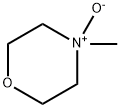


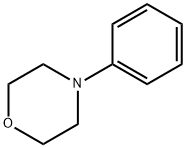

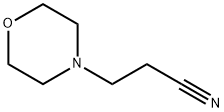

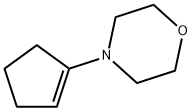
You may like
-
 Morpholine 99%View Details
Morpholine 99%View Details -
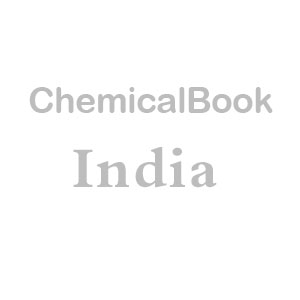 Morpholine CAS 110-91-8View Details
Morpholine CAS 110-91-8View Details
110-91-8 -
 Morpholine extrapure AR CAS 110-91-8View Details
Morpholine extrapure AR CAS 110-91-8View Details
110-91-8 -
 Morpholine extrapure CAS 110-91-8View Details
Morpholine extrapure CAS 110-91-8View Details
110-91-8 -
 Morpholine CAS 110-91-8View Details
Morpholine CAS 110-91-8View Details
110-91-8 -
 Morpholine CAS 110-91-8View Details
Morpholine CAS 110-91-8View Details
110-91-8 -
 Lab Grade Morpholine Liquid CAS 110-91-8View Details
Lab Grade Morpholine Liquid CAS 110-91-8View Details
110-91-8 -
 Morpholine 99.5% CASView Details
Morpholine 99.5% CASView Details
